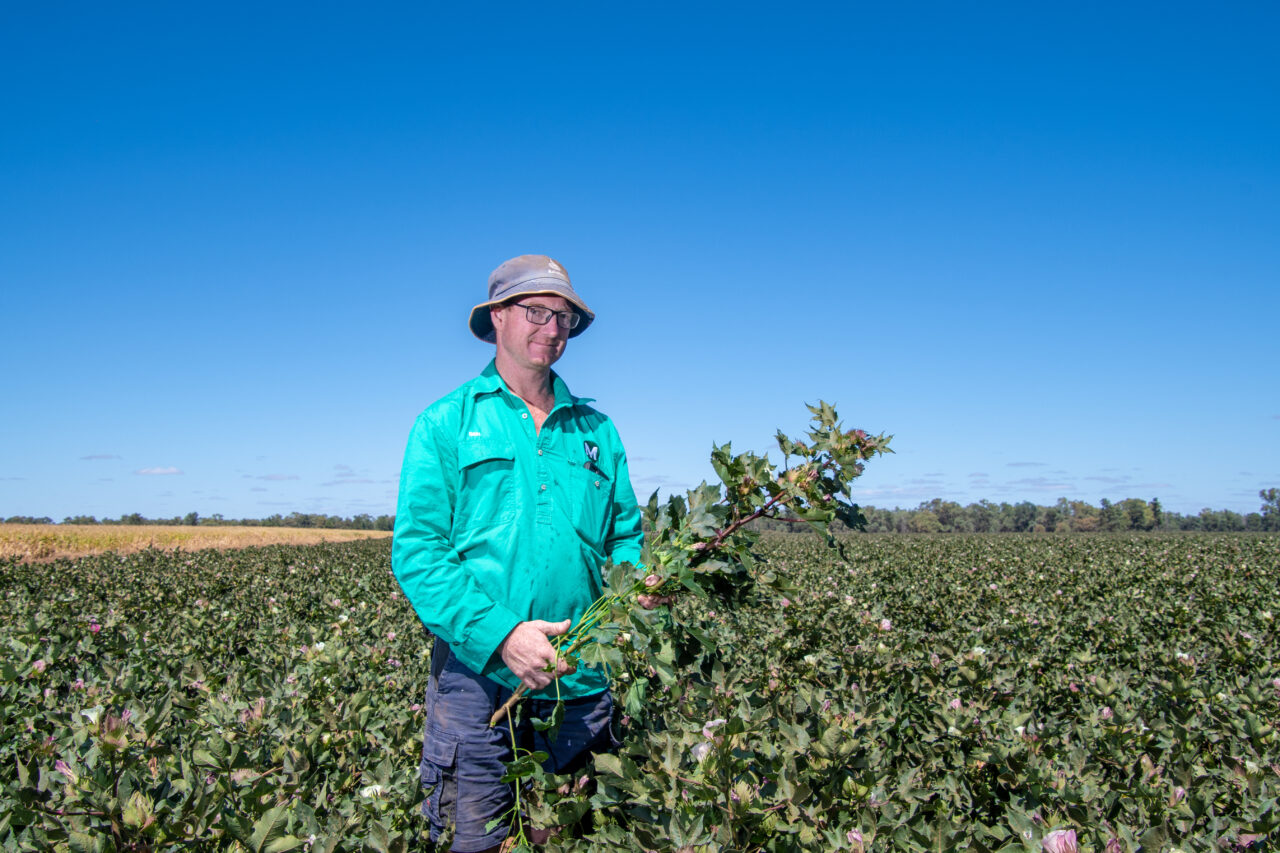
In the small town of Coleambally, southern NSW, cotton farmers Ben and Kim Witham have taken over the lease of 108 hectares of crown land that borders their property and the neighbouring state forest.
The crown land is predominantly native vegetation, but it is also home to plenty of wildlife that uses the Witham’s vegetation corridors to move between the farming paddocks and the forest.
Kangaroos, birds, bats and bugs thrive on the native vegetation, adding a strong frontline to the Witham’s integrated pest management system.
“Linking the state forest with the reserve, and our fields was important to us. Throughout the years we’ve planted tree corridors to link everything together so wildlife can travel safely,” Ben said.
“It’s amazing how much wildlife we see. We’ve got beneficial insects living in these areas that we are essentially looking after and they control the in-crop pest insects, meaning we don’t have to spray as often.”
The latest Australian cotton industry Sustainability Update highlights the importance of biodiversity in cotton farming.
On average, 21% of an Australian cotton farm is remnant native vegetation, and the average width of riparian zones has increased from 178 metres to 186 metres.
Ben says biodiversity has an important role in farming.

“Biodiversity is really important to us. It makes our farming production sustainable and ensures we can hand down our farm to the next generation,” Ben said.
“Farmers are not doing themselves any favours if they aren’t at the forefront of biodiversity.”
In addition to creating native corridors, the Witham’s have classed some sections of their farm as “environmentally sensitive” and sectioned these areas from livestock and farming operations.
“We’ve sectioned off areas of land that have native box trees as well as using pipes to shift water into a small dam in our travelling stock reserve, which then overflows into native biodiversity land,” Ben said.
“During the drought, we were able to keep wildlife safe, sheltered and watered thanks to the water channel between the two reserves.
“With our irrigation system, we can move water off the area if required so the native trees don’t become waterlogged during wet seasons.”
Ben uses an automated irrigation system, incorporating solar power operations that are tailored to suit different areas of his farm.
Not only does it save labour hours, but it has helped Ben improve his water use efficiency.
“At one stage we had about 8000 syphons across two farms. With this automated system we are saving at least 40 hours a week of manual irrigation operations,” Ben said.
